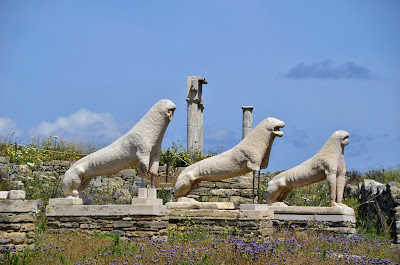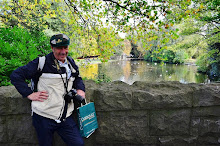GOLDEN DAYS
Words
and pics by Ian Smith
My joy at
being back in the motorhome and having a cup of tea knew no bounds; I salivated
over every warm mouthful and relaxed, thinking of the morrow and a walk with
Terry.
The third
day dawned and it was the day I was going to Gleniffer Falls, somewhere beyond
my campsite on Never Never Creek. I
hoped he wouldn’t turn up on time (7 a.m.) as the winter chill penetrated my
clothing but, lo, there he was and with two passengers. My hope of stalling him with a cup of tea
dissipated and I hastily started packing.
Never Never Creek
He had
Ben, a P.E. teacher at Dorrigo who is his next door neighbour and his grandson
Charlie aboard. So we clambered into the
2WD and, soon after, wished we were in a 4WD when we drove up the track to
Cliff’s place, a strange assortment of edifices in various states of disrepair
strewn across a bare patch of land and accompanied by abandoned motor vehicles.
Cliff, a
man in his eighties, was there to greet us and was decidedly uninterested in my
handshake and introduction as he sought to find out why Terry was a day
early. That hurdle over, he later
wondered why Terry was locking his car as he figured that if we didn’t return
in a couple of days he could look forward to adding to his car collection.
 |
| Cliff's Collection |
We set
off downhill to the creek and then turned left and started clambering over
rocks, an act that didn’t cease for the next 7 hours.
Ben and Charlie taking a break
There are
no trails here, no tracks to follow, just a seriously stony river not anxious
to give up its secrets. After a time I
started asking Terry, he of the GPS, how far we’d gone and how long had it
taken. It must have sounded like the
“are we there yet Mum?” that children are wont to cry but Terry was kind to
me. I was a bit shattered when I
discovered that, after an hour, we hadn’t even gone a kilometre up the creek.
As each
succeeding hour passed, and we digressed up a side creek, my legs started to
tire as I scanned the horizon for the famous gorge that everyone else swims
through but Terry said we could circumvent.
Finally it was visible and the nimble among us scouted ahead to see how
bad it was. Turns out it was a little
too tricky to navigate so we took Terry’s diversion up the side of the
seriously steep bank and scrambled our way skyward.
Charlie and Terry looking for a route around
the canyon
At times
the virgin route seemed almost impassable but, encouraged by Terry’s assurance,
we soldiered on and pushed upstream before descending again to what I thought
was Gleniffer Falls; but, no, it was a point from which you can view Gleniffer
Falls.
The impressive Gleniffer Falls
I had
been warned I may not be impressed but the opposite was the case. After scrambling up a side chute of what I
thought had been Gleniffer Falls, I gazed in awe at the distant spectacle of
multiple falls in succession cascading off the distant mountain range. There,
indeed, were the hallowed cascades. I’d
never realised just how high they were.
Ben proffered they were the highest in Australia but I ventured that
someone had done the exercise and, accordingly, Wallaman was listed as the
longest single drop in Australia though Wollomombi is claimed to be by other
sources. That still didn’t make
Gleniffer any less impressive; for me, they are one of the best falls I’ve ever
seen.
Sadly, to
get up close to them really requires an overnight journey by the truly fit or
an abseil off the cliff, neither idea holding any attraction for me. All too soon it was time to head back, Terry
of the time piece a little concerned that it had taken us 4 ½ hours so far and
we’d only travelled a shade over 3 kms, which was a reflection on (a) how many
photos I’d taken but, more seriously, (b) how rugged it was.
Golden waters in a side stream
As we
trekked back, finding an easier route around the canyon, the pace was much
quicker; after all, I’d already seen the gold I sought. It had been in the side stream and, later, in
Never Never as well. The afterglow of
the sun on high dashed itself on the gentle waters and there had been the
enchanting gold, below the corrugation of ripples that fanned out from the base
of a cascade.
The view was always special
With the
increased pace came fatigue and I was the first to stumble, something I did
three times and Terry five; trouble was my first and third stumbles were worse
than any of Terry’s and my shin and back suffered accordingly, the rocks having
re-affirmed their lack of give. After
not quite 2 ½ hours we were back, always with the feeling that Ben and Charlie
could well have been home and showered in front of the telly if it hadn’t been
for the old farts.
Still, it
had been another memorable day, one I won’t repeat, but that didn’t make it any
the less unforgettable, and I had found gold.
Labels: Australian waterfalls, Bellingen, cascades, cliffs, creek, eucalypts, Gleniffer Falls, Never Never Creek, river



























